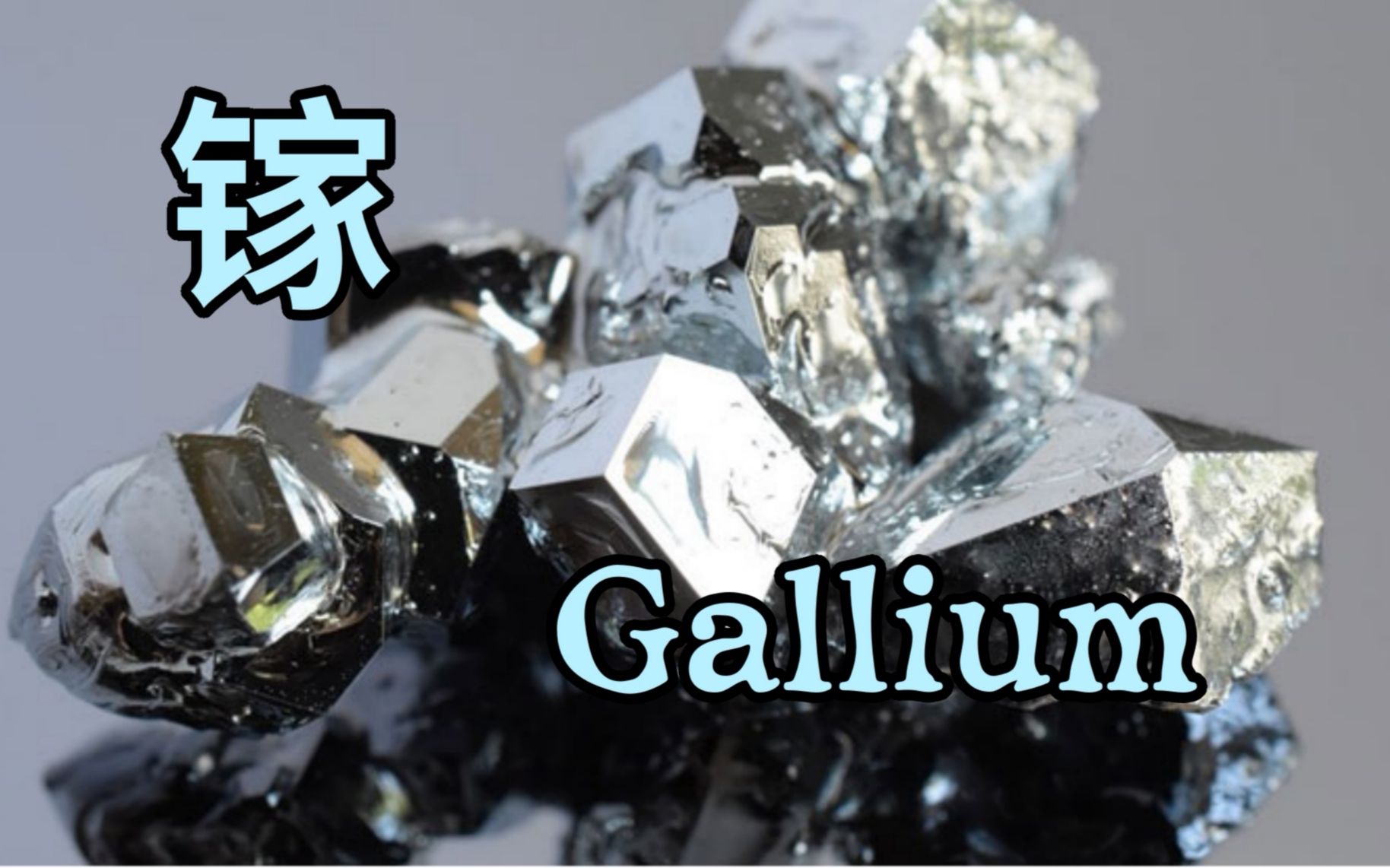
There is a kind of metal that is very magical. In daily life, it appears in liquid form like mercury. If you drop it on a can, you will be surprised to find that the bottle becomes as fragile as paper, and it will break with just a poke. In addition, dropping it on metals such as copper and iron also causes this situation, which can be called the “metal terminator”. What causes it to have such characteristics? Today we will enter the world of metal gallium.

1、What element is gallium metal
Gallium element is in the fourth period IIIA group in the periodic table of elements. The melting point of pure gallium is very low, only 29.78 ℃, but the boiling point is as high as 2204.8 ℃. In summer, most of it exists as a liquid and can be melted when placed in the palm. From the above properties, we can understand that gallium can corrode other metals precisely because of its low melting point. Liquid gallium forms alloys with other metals, which is the magical phenomenon mentioned earlier. Its content in the Earth’s crust is only about 0.001%, and its existence was not discovered until 140 years ago. In 1871, Russian chemist Mendeleev summarized the periodic table of elements and predicted that after zinc, there is also an element below aluminum, which has similar properties to aluminum and is called an “aluminum like element”. In 1875, when French scientist Bowabordland was studying the spectral line laws of metal elements of the same family, he found a strange light band in sphalerite (ZnS), so he found this “aluminum like element”, and then named it after his motherland France (Gaul, Latin Gallia), with the symbol Ga to represent this element, so gallium became the first element predicted in the history of chemical element discovery, and then found the confirmed element in experiments.

Gallium is mainly distributed in China, Germany, France, Australia, Kazakhstan and other countries in the world, of which China’s gallium resource reserves account for more than 95% of the world’s total, mainly distributed in Shanxi, Guizhou, Yunnan, Henan, Guangxi and other places [1]. In terms of distribution type, Shanxi, Shandong and other places mainly exist in bauxite, Yunnan and other places in tin ore, and Hunan and other places mainly exist in sphalerite. At the beginning of the discovery of gallium metal, due to the lack of corresponding research on its application, people have always believed that it is a metal with low usability. However, with the continuous development of information technology and the era of new energy and high-tech, gallium metal has received attention as an important material in the information field, and its demand has also greatly increased.
2、 Application Fields of Metal Gallium
1. Semiconductor field
Gallium is mainly used in the field of semiconductor materials, with gallium arsenide (GaAs) material being the most widely used and the technology being the most mature. As a carrier of information dissemination, semiconductor materials account for 80% to 85% of the total consumption of gallium, mainly used in wireless communication. Gallium arsenide power amplifiers can increase communication transmission speed to 100 times that of 4G networks, which can play an important role in entering the 5G era. Moreover, gallium can be used as a heat dissipation medium in semiconductor applications due to its thermal characteristics, low melting point, high thermal conductivity, and good flow performance. Applying gallium metal in the form of a gallium based alloy in thermal interface materials can improve the heat dissipation ability and efficiency of electronic components.
2. Solar cells
The development of solar cells has gone from early monocrystalline silicon solar cells to polycrystalline silicon thin film cells. Due to the high cost of polycrystalline silicon thin film cells, researchers have discovered copper indium gallium selenium thin film (CIGS) cells in semiconductor materials [3]. CIGS cells have the advantages of low production costs, large batch production, and high photoelectric conversion rate, thus having broad development prospects. Secondly, gallium arsenide solar cells have significant advantages in conversion efficiency compared to thin film cells made of other materials. However, due to the high production cost of gallium arsenide materials, they are currently mainly used in the aerospace and military fields.
3. Hydrogen energy
With the increasing awareness of the energy crisis all over the world, people are seeking to replace non renewable energy sources, of which hydrogen energy stands out. However, the high cost and low safety of hydrogen storage and transportation hinder the development of this technology. As the most abundant metal element in the crust, aluminum can react with water to produce hydrogen under certain conditions, which is an ideal hydrogen storage material, However, due to the easy oxidation of the surface of metal aluminum to form a dense aluminum oxide film, which inhibits the reaction, researchers have found that low melting point metal gallium can form an alloy with aluminum, and gallium can dissolve the surface aluminum oxide coating, allowing the reaction to proceed [4], and the metal gallium can be recycled and reused. The use of aluminum gallium alloy materials greatly solves the problem of rapid preparation and safe storage and transportation of hydrogen energy, improving safety, economy, and environmental protection.
4. Medical field
Gallium is commonly used in the medical field due to its unique radiation properties, which can be used for imaging and inhibiting malignant tumors. Gallium compounds have obvious antifungal and antibacterial activities, and ultimately achieve sterilization by interfering with bacterial metabolism. And gallium alloys can be used to make thermometers, such as gallium indium tin thermometers, a new type of liquid metal alloy that is safe, non-toxic, and environmentally friendly, and can be used to replace toxic mercury thermometers. In addition, a certain proportion of gallium based alloy replaces the traditional silver amalgam and is used in clinical applications as a new dental filling material.
3、 Outlook
Although China is one of the main producers of gallium in the world, there are still many problems in China’s gallium industry. Due to the low content of gallium as a companion mineral, gallium production enterprises are scattered, and there are weak links in the industrial chain. The mining process has serious environmental pollution, and the production capacity of high-purity gallium is relatively weak, mainly relying on exporting coarse gallium at low prices and importing refined gallium at high prices. However, with the development of science and technology, the improvement of people’s living standards, and the widespread application of gallium in the fields of information and energy, the demand for gallium will also rapidly increase. The relatively backward production technology of high-purity gallium will inevitably have constraints on China’s industrial development. Developing new technologies is of great significance for achieving high-quality development of science and technology in China.
Post time: May-17-2023
